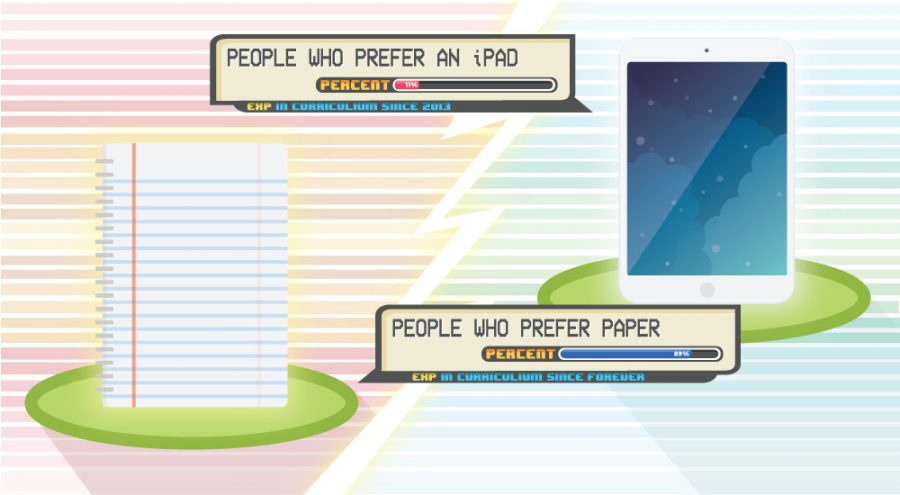As technology becomes more and more prevalent, RBHS educators are adjusting their teaching methods. Instead of manually turning in worksheets and essays, students can submit classwork anytime and anywhere.
AP Physics teacher Malcolm Smith has downloaded e-books for the first time this year and plans to utilize them by giving out reading assignments to his students. Smith has also experienced shortages concerning material textbooks. Therefore students who prefer paper over screens don’t always have access to them.
“[All] 30 [AP Physics] books were checked out the first day. Students want the hard copy at home when they do homework and the e-book at school so they don’t have to carry the book around. They want the convenience of both worlds,” Smith said. “The problem is that books are $145 [and] schools typically only use those textbooks for about five years. E-books run about $25. So if they’re $25, then the school district is saving money with e-books.”
More technology means a change in roles for teachers. Access to the internet leads to a greater reliance on teachers to act as guides, rather than providers of all the information, according to the U.S Board of Education. Students have noticed the change their classrooms.
“I feel like teachers have been less active in the classroom,” sophomore Ruth Wu said. “It’s more of a, ‘Oh look, I typed these instructions online so go look at them and then go do them, and I’ll just kind of stand here in the corner if you ever need help.'”
Researchers have even shown that paper text is preferable over screens concerning cognitive functions. Technology negatively affects learning because it only captures students’ attention for short, cyclical time periods and works against concentrated effort. Professor and digital information researcher Dr. Andrew Dillon believes schools should take action now.
“[Schools need] time spent away from screens. [They need to provide] paper versions for lengthy documents [and need to] teach students how to recognize their own learning styles and behaviors. These metacognitive skills are increasingly important for all of us in our world,” Dillon said. “Use the technology where it has the most benefit and give people a chance to do the very human acts of discussion and challenging of ideas.”
Students such as Wu have experienced more than just negative effects concerning brain function.
“It’s not very reliable, half the time you can’t get on the textbook or maybe the internet isn’t working or maybe the iPad just has a grudge against you. It’s not really helpful and in online textbooks you can’t flip pages much, so it’s not easy for you to go back and look at different things and sometimes it doesn’t load,” Wu said. “So it’s not always accessible, it’s not necessarily efficient and it’s actually bad for your eyes. After staring at a screen for a really long time my eyes hurt and that’s not good.”
Overall it’s up to the students to decide what’s right for them, and it’s up to the school to provide the resources necessary in order for students to learn in the best way possible.
“When trying to study [on paper or on screen], turn off other apps and devices. Give your wonderful brain a chance to concentrate. Too much technology captures attention and distracts our processing. You cannot fight this — it is hard wired into our brains but you can control the environment to minimize those stimuli,” Dillon said. “And if you do this right, learning will be deeper and faster, giving you more time to be distracted late”
By Grace Dorsey
Infographic by Neil Cathro, based on survey of 195 students at Rock Bridge High School
Categories:
How fine print stacks up to digital screens
September 30, 2015
0
More to Discover













































































